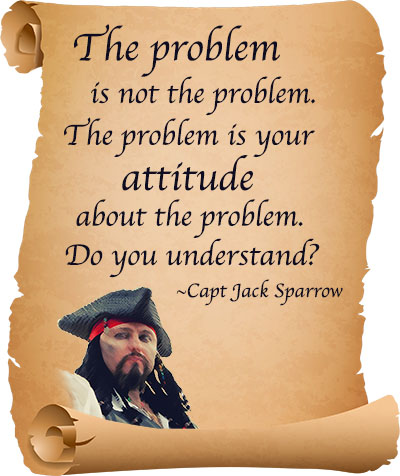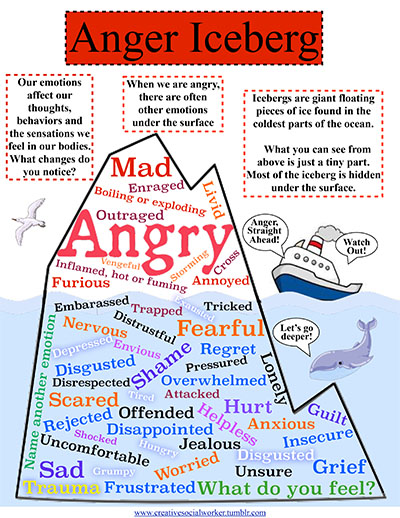When the Problem is Not the Problem: Emotions, Feelings and Attitudes
By Michael Everett, MHS | June 26, 2018
Project Co-Director, ETR
Are you a trainer? If so, you are likely to already know this truism. Changes in knowledge come pretty easily. Changes in skill take a little more effort. But let’s face it—changing attitudes sometimes feels impossible.
In his book The Conditions of Learning, instructional designer Robert Gagne defined attitude as “a mental state that predisposes a learner to choose to behave in a certain way.” As professional development providers, we often see our job as gathering the facts for our presentations and designing activities that help to reinforce learning. However, one of our most important jobs, and one that isn’t always so straightforward, is to consider difference.
By difference, I mean the varied experiences of your audience and the array of motivations that move them toward change. I also mean the attitudes that might keep them in the same place emotionally that they were in when they walked into the training. This is just another way to say rarely is the problem the problem. Instead, the problem for most participants is their attitude about the content.

Attitudes Are Shaped by Feelings and Emotions
Our emotional state has a lot to do with our mental state, and this all ties into attitude. Kind of like when you go shopping and you’re thinking, “I’m just doing my due diligence to keep my home in order.” You have a list of specific items, or maybe just one item, you’re going to buy. And then you find yourself leaving with much more than you initially intended to purchase. Why does this happen?
This phenomenon may be related to the fact that we sometimes purchase with our feelings. Notice I didn’t say, “purchase with our emotions.” There’s a reason for that. While emotions and feelings are connected, there are distinct differences.
Emotions vs Feelings
Emotions are part of our hard wiring—our instinctive nature. They are cues for how to respond to a particular experience or stimuli. For example, when someone catches us off guard—say, by coming up behind us and slapping us robustly on our back—we might be startled. Almost immediately, we process this experience and label it as fear. Chances are we already have a set-sequence of fear-based reactions.
Feelings, on the other hand, are the schema or mental associations we assign to emotions based on our individual histories. You turn and see that the back slapper is your brother-in-law, and your fear response fades away (you like your brother-in-law!). Or you realize the person who has just startled you is a complete stranger who is now shouting expletives at you, and your fear response increases.
Let’s look at another example. How do you feel about clowns? Most people are not afraid of clowns. There is no inherent danger in being around clowns. In fact, most clowns are fun and deliver a happy association for people. However, a traumatizing experience with a clown can last some people a lifetime. Those people are afraid of clowns.
So—back to shopping with our feelings. In the same way that we attribute feelings to clowns, we project feelings onto services, products and brands. This can prompt us to make a purchase we might not actually need. The meaning behind our positive feelings about a brand may be a payoff for us emotionally.
I’m a case in point. I am an avid purchaser of Tide with Bleach laundry detergent. I don’t know if this brand is the very best for washing clothes. I do know both my grandmother and mother purchased this brand during my childhood. To this day, the fragrance of Tide-washed clothes filling my home on Saturday mornings brings back positive and familiar feelings.
This type of experience is known as brand attachment. In some cases, people spend to the point of compulsion in an attempt to temporarily diminish unpleasant feelings, and then replace them with pleasurable associations and feelings. My attitude about the Tide brand is deeply connected to its place in my childhood. Although my partner has tried to get us to purchase other brands, it’s probably never going to happen unless I undergo a pretty transformative intervention!
We Bring Our Feelings to Our Work—and to Trainings
In my work as a trainer, I have observed similar deep-rooted connections—not to laundry products, but to sexual health subjects. I have watched topics provoke a range of emotions and feelings which might result in some people shutting down, others speaking up in support, and still others becoming argumentative. One thing is for sure—feelings can act as a gatekeeper to more, or less, learning and enlightenment.
I’m especially interested in attitudes that are aligned with a professional commitment to support people living with HIV. Some of these attitudes receive virtually universal acceptance—treat PLWHIV with respect, facilitate access to services, help people understand the benefits of treatment. But I’ve also seen attitudes that can divide a room deeply.
I believe this is the consequence of our connectedness to ideas—our brand loyalty, as it were—about what safety and risk mean in the HIV community. Even when presented with facts and concepts that would ordinarily challenge a set of inaccurate beliefs or understanding, our feelings can unintentionally be a barrier to our growth and empathy.
In one particular training, I was doing a forced choice activity with members of the HIV/AIDS workforce. I asked whether they agreed or disagreed with a sexually active HIV-positive person who chooses not to share their HIV status with partners before engaging in sex. This question completely divided the room.
Now, if I were doing this activity with a more general audience, I could understand the personal feelings that come up. Choice is important, being safe might be a value people hold, and on some level, we want to believe that everyone has our best interests at heart.
But HIV service providers are different. The standard is higher and more challenging because of the nature of the work. Our job is to work with people at risk of acquiring HIV and those who are presently living with HIV. This means that while we combat information and behaviors that promote risk, we are also expected to understand the potential dangers a client might face in disclosing an HIV status.
A client might be rejected and/or harmed by a partner. A client might also suffer discrimination or public disdain if the information is shared. Disclosure forces a person with HIV to talk about a subject they might want to set aside for the moment—who wants to talk about disease before having sex? And the latest science—even the CDC—tells us that when HIV is treated and the viral load is undetectable, the virus is untransmittable. For many PLWHIV, their sexual activity does not pose an HIV risk to others.
Navigating Emotions and Feelings
So how does one resolve the internal resistance that might arise as a result of such conflicts? The answer is to explore attitudes.
Anecdotally, I have heard hundreds of people in the HIV/AIDS workforce discuss how this conflict impacts their ability to provide non-judgmental service to sexually active people living with HIV. This is a bigger issue than it might seem on the surface. As educators, when we see an attitude show up as disruption to the flow of learning, we are literally only looking at the tip of the iceberg.
The “Anger Iceberg” illustrates this well.
The top of the iceberg represents the conflict—the thing that makes a person upset or annoyed. Below the surface, what we cannot see are the motivations to maintain a particular view point or exhibit a particular behavior. In our short time with our training audiences, if we are able to identify what’s below the surface, we can respond with effective tools. We acknowledge the validity of our participants’ feelings, which helps disarm their resistance, and then we offer alternative perspectives.
This process can be described as providing safety and challenge.
Attitudes
Trainings where attitudes are driving forces can be powerful. They are also events that require some learning around cultural humility. The state of an individual’s cultural humility and competence can be deeply rooted in their attitudes toward a group. It takes ongoing self-accountability to shift attitudes to a place where our bias isn’t competing to be right, and instead our rational selves are invested in being well and doing our jobs successfully.
Cultivating productive attitudes involves inviting your audience to participate in self critique and evaluation. Typically, the goal of training is to support the work of professionals or students in new learning, ultimately geared towards making a difference in behavior and/or intentions. This might require a disruption of old habits, including the ways one may have historically thought about a group, behavior or institution.
Supporting attitude shift means we must first identify what the attitude is, then explore various motivations that can challenge current logic. In Part 2 of this post, I’ll share some specific activities and resources that can move this process along in a training.
Michael Everett, MHS, is a Project Director at ETR. He can be reached at michael.everett@etr.org.





